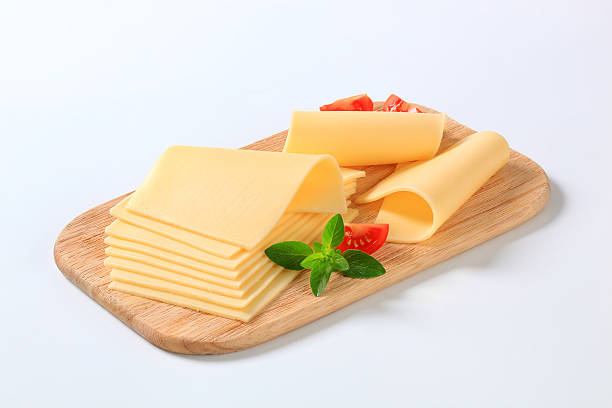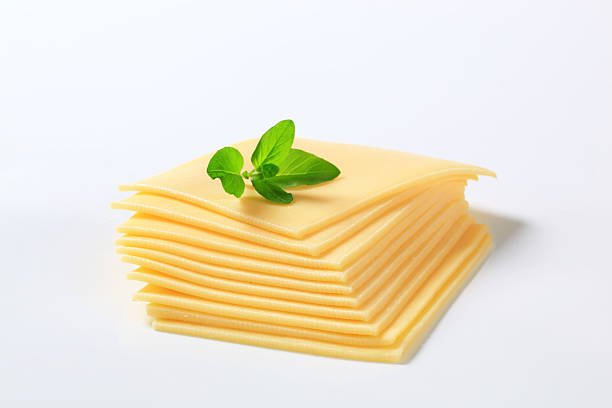A slice of cheese can be a delicious and nutritious addition to many meals and snacks, but it’s important to know how many calories it contains so you can make informed choices about your diet.
The calorie content of cheese can vary depending on the type of cheese and how it’s made. For example, a slice of cheddar cheese contains about 114 calories, while a slice of Swiss cheese contains about 108 calories. A slice of mozzarella cheese contains about 85 calories. The fat content also varies among cheese types, with cheddar cheese containing 9 grams of fat, Swiss cheese containing 8 grams of fat, and mozzarella cheese containing 6 grams of fat per ounce.
When it comes to processed cheese, such as American cheese, the calorie and fat content can be higher. A single slice of American cheese contains around 70-90 calories and 6 grams of fat.
Cheese is a good source of protein and calcium, but it is also high in fat and cholesterol. The calorie content of cheese can vary depending on the type of milk used to make it. For example, cheese made from whole milk will typically have more calories than cheese made from skim milk.
The most common types of cheese and their calorie content per ounce are as follows:
Cheddar cheese: 114 calories
Swiss cheese: 108 calories
Mozzarella cheese: 85 calories
Cream cheese: 99 calories
Blue cheese: 100 calories
Feta cheese: 75 calories
In addition to the calorie content, it’s important to consider the fat content of cheese. Cheddar and Swiss cheese are relatively high in fat, with 7 grams of fat per ounce. Mozzarella and cream cheese, on the other hand, have less fat, with 6 grams and 5 grams per ounce, respectively. Blue cheese and Feta cheese are relatively lower in fat, with 4 grams and 3 grams per ounce respectively.
When it comes to cholesterol, cheese can be a significant source. For example, Cheddar cheese contains 30 milligrams of cholesterol per ounce, while Swiss cheese contains 24 milligrams. Mozzarella, Cream cheese, Blue cheese, and Feta cheese contains 20 milligrams, 20 milligrams, 25 milligrams, and 6 milligrams per ounce respectively.
It’s worth noting that many cheeses are also high in sodium, which can contribute to high blood pressure. For example, a single ounce of Cheddar cheese contains 175 milligrams of sodium.
It’s important to keep the calorie and fat content of cheese in mind when including it in your diet. If you’re watching your weight or trying to reduce your fat and cholesterol intake, it’s a good idea to limit your portion sizes and choose lower-calorie options, such as mozzarella or feta cheese.
The calorie and fat content can also vary depending on the thickness of the slice. A thinner slice will have fewer calories and less fat than a thicker slice.
It’s important to note that cheese is high in saturated fat, which can raise your cholesterol levels and increase your risk of heart disease if consumed in large amounts. However, cheese is also a good source of calcium, protein, and other nutrients. To keep the calorie and fat content in check, it’s a good idea to stick to the recommended serving size of 1 ounce (about the size of a dice) or less.
In addition to the calorie and fat content, it’s also important to consider the other nutritional value of cheese. Many types of cheese are an excellent source of calcium, which is essential for healthy bones and teeth. Cheese is also a good source of protein, which is important for maintaining muscle mass and repairing tissues.
In conclusion, the calorie content of cheese can vary depending on the type and serving size, but most types of cheese fall within the range of 85-114 calories per slice. It’s important to keep track of your cheese consumption, as it is a high-calorie and high-fat food, but it’s also a great source of calcium, protein, and other nutrients. Therefore, it can be included in a well-balanced and healthy diet, when consumed in moderate amounts.

 Home
Home Health
Health Diet & Nutrition
Diet & Nutrition Living Well
Living Well More
More













